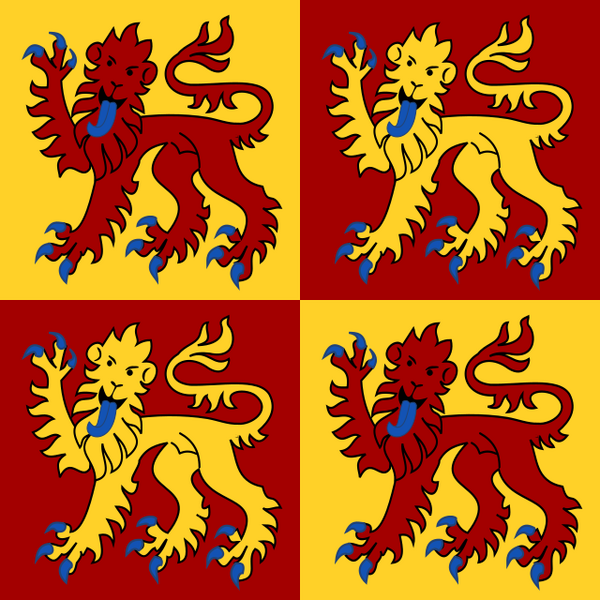De BBC-serie The snow spider is een verfilming van het gelijknamige boek van Jenny Nimmo (deel van The magician trilogy). Zowel het boek als de serie putten sterk uit de Middelwelshe verhalen van de Mabinogi. In dit artikel vergelijkt Catriona Hüseyin de manier waarop de serie zich verhoudt tot de middeleeuwse teksten. De serie is een bewust vrije adaptatie, die de geest van de oorspronkelijke verhalen probeert over te brengen op een nieuwe generatie. In wezen belichaamt de serie hiermee de gedachte dat een pragmatische, actieve aanraking met een cultuur de beste manier is om deze te behouden. In dit geval door met een kinderserie 'een gedeeld landschap' te scheppen en zo een brug te slaan tussen het moderne en het oude Wales.
In the winter of 2021, BBC Wales broadcast an adaptation of the beloved children’s novel The snow spider.[1] The screenplay was written by the celebrated Welsh poet Owen Sheer (known for Skirrid hill, published in 2005), who wanted to create a show which would encourage his children and others like them to absorb Celtic mythology as part of their intangible, Welsh cultural heritage. The snow spider reflects Sheer's love of Welsh stories and landscape as a kind of ‘shared territory’, connecting modern Wales with its Celtic past.[2]
The snow spider is based on Jenny Nimmo’s 1986 novel of the same name, which won the Tir na n-Og Welsh Book Awards in 1987.[3] Rather than directly transposing the Celtic myths into the modern world, Nimmo seeks to bring elements from Welsh mythology “into a story of my own”.[4] Nimmo creates a fantastical postcard of Wales in which Celtic mythology and the storytelling of modern children’s literature live alongside each other, showing that Welsh language and cultural heritage can be a living and evolving part of the community, rather than a static object in the past.
The television series follows the hero’s journey of Gwyn, a young boy descended from the wizard Gwydion of Gwynedd.[5] Gwyn discovers his wizarding powers with the help of his grandmother Nain and goes on a quest to find his missing sister Branwen. Gwyn develops his ability to call magic by reading The Mabinogion, and with the help of five magical gifts from Nain: a brooch, a piece of dried seaweed, a tin whistle, a scarf, and a broken toy horse with the warning 'dim hon' (i.e. "not this").[6] As Gwyn experiments inexpertly with these magical objects, he inadvertently releases the sadistic villain Efnesian from his imprisonment inside the wooden toy horse, leading to a final battle in which Gwyn must save his community. He succeeds in doing this partly by turning his best friend Alun into an eagle.[7] In the final episode, Gwyn decides to say farewell to his sister Branwen, who wishes to return to the kingdom of Annwn, into which she disappeared and was transformed into a powerful, cold fairy princess.[8] Gwyn rejects her offer to pursue ultimate power together in the mythological realm, instead returning home to serve his community, proclaiming that “Wales is my home”.[9]
From this brief synopsis, the reader may already have spotted how The snow spider directly samples specific characters, symbols and plot elements of Medieval Welsh mythology. I draw the reader’s attention to just a few, starting with the gift of seaweed, which Gwyn transforms in a moment of despair at the beach into a ship, just as Gwydion does in Math fab Mathonwy.[10] There are subtle similarities between the functioning of magic in both tales, where Gwyn and Gwydion both 'call' on magic, and by using objects to channel magic, these objects are transformed from plain everyday items into beautiful and precious metal treasures.[11] Whilst this may initially seem shallow or hyper-visual as references, it should be noted that in these examples, the narrative and emotional context found in the Welsh medieval source is also transposed, as is the thematic importance of the enriching and magical quality of language in both mythological and actual worlds.
Moreover, the broad strokes of the 'echtraic' narrative arch also remain the same. An echtra is a specific genre in medieval Celtic literature, constituting a journey tale, where a hero is tempted by a female figurewhile on his adventure to a magical otherworld.[12] In The snow spider, this echtra-structure is seen when Gwyn resists his sister’s offer of immortality and magical power in order to complete his return to his rural Welsh community and thus overcome the same heroic flaw as his ancestor Gwydion of Gwynedd by learning to use magic and power with caution and for the benefit of his community.
The most significant theme in both the original and the adaptation is the importance assigned to storytelling. Gwydion’s prowess as a storyteller is a core aspect of his heroic character in Math fab Mathonwy, and his englyn to save Lleu when he is trapped in eagle form is the literary and emotional epitome of the story, as well as the most powerful act of magic and love the wizard performs in the myth.[13] Similarly, the importance of storytelling and the Welsh language is also paramount in The snow spider, “because it’s the language that carries the magic […] The old language is alive in your mouth”.[14] Welsh is the living language of magic in which whispering magical entities speak through the wind, and Gwyn uses it to recite his ancestry and calls on it to achieve magical actions.
The series acknowledges the fascinating phenomenon that due to the language resurgence in Welsh schools, children often now have a linguistic connection to Welshness and a connection to their elders and the past which had skipped their parents’ generation. This is acknowledged within the show when Nain remarks that the wizard “couldn’t have been dad, because he didn’t have the language, it was dying. It wasn’t back in the schools like now.”[15] This takes on a metatextual element because some of the Welsh children intended to watch the series may well understand the simple, magical Welsh phrases which Gwyn speaks, whereas their parents might not.
Language and literature as a means of intergenerational transfer of an intangible cultural heritage is an important theme within The snow spider in its construction of the Nachleben of mythology. Nain is one of the most important characters of the series because of her role in orally transmitting Welsh mythology to the young heroes. Whilst Nain begins the story as a comically eccentric granny, it is her prophetic bedtime stories which enable Gwyn and his friends to master their quests by using their knowledge of mythology.
Nain’s ownership of an old Welsh codex titled The Mabinogion is on its face a terrible anachronism, but it illustrates the important place of print and manuscript heritage in creating a sense of authentic connection to medieval mythology.[16] Gwyn and his friends use the codex to feel a sense of ownership of this mythology and connect it to their modern lives, mirroring the importance of Lady Charlotte Guest’s edition of The Mabinogion as a tale for boys, a phenomenon which allowed a generation of children to bring Medieval Welsh mythology into their conscious and subconscious perception of the world.[17]
The snow spider consciously rejects historical accuracy in order to achieve a more direct sense of modern engagement with mythology. Gwyn and his friends equally use the ‘medieval’ codex given by Nain and the BBC’s educational websites on Gwyn’s iPad, prioritising promoting access to and the children’s agency over the myths over textual purism. The series is self-aware of its choices and priorities, even joking about this with the audience in a scene where Gwyn starts reading a particularly inappropriate section of Branwen and Lyr aloud and is cut off.[18] The series' approach is unapologetic in its focus on Nachleben as a pragmatic engagement rather than an accurate reproduction of the past. Homage is paid to the contribution of informal transmission, often the labour of women’s oral and textual efforts, which enable Welsh mythology to remain a living part of the modern Welsh cultural community, rather than languishing in a preserved yet distanced past. This mirrors the Welsh government's language education strategy in its focus on pragmatic engagement.[19]
To conclude, the common fallacy that looser adaptations and those for younger audiences tend to lose both meaning and connection with their medieval sources does not ring true in the case of The snow spider. Rather, the snow spider is highly sophisticated in the way it transposes elements of Welsh mythology, layering the meaning of these elements in a manner that allows them to be enjoyed by viewers of different ages and with varying amounts of pre-existing knowledge of Welsh mythology. This reflects the BBC’s aim of balancing the educational and entertainment value of its television content, and its need to connect with diverse mass audiences through its shows.
Just like Gwyn’s beautiful gifts or Nain’s treasured tales, in The snow spider Celtic myths are meant to be read and played with, especially by the women and children who are often the agents of intergenerational cultural transfer. Living language, literature and landscape are cherished as liminal treasures, that bring about a sense of shared community in both past and present. Both our hero Gwyn and his Celtic inspiration Gwydion of Gwynedd obtain their catharsis partly through failing to bring back to life that which they love most. This reflects the message of The snow spider, that pragmatic engagement with the Welsh past should be prioritised in order to effectively preserve the cultural heritage of the community, rather than focusing on what has been lost. This sense of communal ownership and adaptation is what makes the Welsh myths a truly ‘shared territory’ in The snow spider.
Notes
Bibliography
- Ahmed, Samira, 'Interview of Owen Sheer', Front Row (BBC Radio 4 2020). https://www.bbc.co.uk/sounds/play/m000glp4 (accessed 31st May 2023).
- Anonymous, ‘What influenced the author of ‘The snow spider’, BBC Wales (2020). https://www.bbc.co.uk/programmes/articles/YWyKddFnmWpTywmlWP2QLh/what-influenced-the author-of-the-snow-spider (accessed 31 May 2023).
- Davies, Sioned (trans.), The Mabinogion (Oxford 2008).
- Salisbury, E., entry for: 'Englyn', The encyclopedia of medieval literature in Britain, eds. Sian Echard et al. (Hoboken, New Jersey 2017).
- Guest, Charlotte (trans.), The Mabinogion (London 1902).
- MacKillop, James, entry for: 'Gwydion', A dictionary of Celtic mythology (Oxford 2004). https://www.oxfordreference.com/view/10.1093/acref/9780198609674.001.0001/acref-9780198609674-e-2699 (accessed 31 May 2023).
- -----, entry for: 'Echtra', A dictionary of Celtic mythology (Oxford 2004). https://www.oxfordreference.com/view/10.1093/oi/authority.20110803095740691 (accessed 31 May 2023).
- Nimmo, Jenny, The snow spider (New York 1986).
- Pandolfo Briggs, Elizabeth L., 'On the inside looking in: contemporary Anglo-Welsh fantasy.', The lion and the unicorn 23, no. 1 (1999) 67-78.
- Sheridan, Jennifer (prod.), The snow spider (CBBC 2020).
- Welsh Government, Welsh Language Strategy Action Plan 2022/2023 (2022). https://www.gov.wales/cymraeg-2050-welsh-language-strategy-action-plan-2022-2023-html (accessed 31 May 2023).
- White, Donna R., A century of Welsh myth in children's literature, Contributions to the study of science fiction and fantasy 77 (Westport, Connecticut 1998).




